CONSERVATION PRACTICES AT RAVEN’S NEST
Habitat Restoration

Professional Ethnobotanist, Wildlife Biologist, Naturalist and Conservationist Vincent Pinto designed an action oriented, hands-on, Ecological Restoration Strategy. Vincent’s relentless determination since 2008 has led to the rehabilitation of the land to recreate a functioning ecosystem. The Habitat Restoration success throughout the 42-acre Nature Preserve is due to Vincent’s understanding of the species life cycles and interactions, and the food, water, nutrients, space, and shelter that is necessary to sustain diverse and resilient species populations.
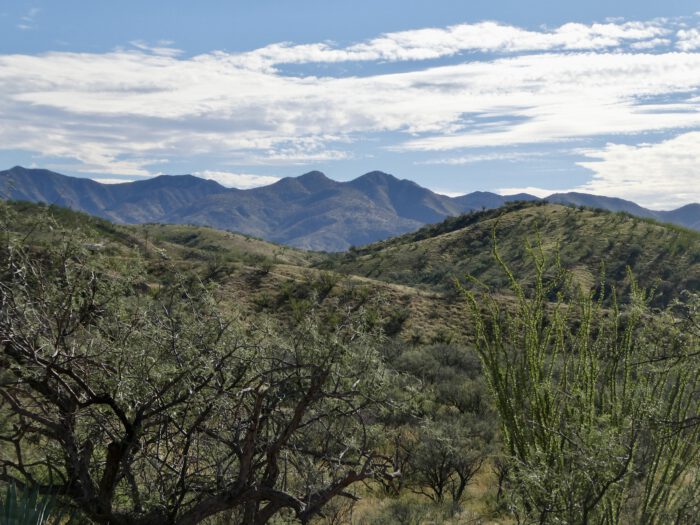
Upon arrival at Raven’s Nest Nature Sanctuary in March 2008, Vincent committed to restoring degraded habitats and promoting land conservation. Our 42-acre preserve contains a beautiful array of natural environments, each of which has benefitted by Vincent’s carefully designed and implemented land management practices. Our habitats include:
- Mesquite and Acacia Woodlands
- Grasslands
- Ocotillo Forests
- Arroyos
- Canyons
- Wildlife Ponds
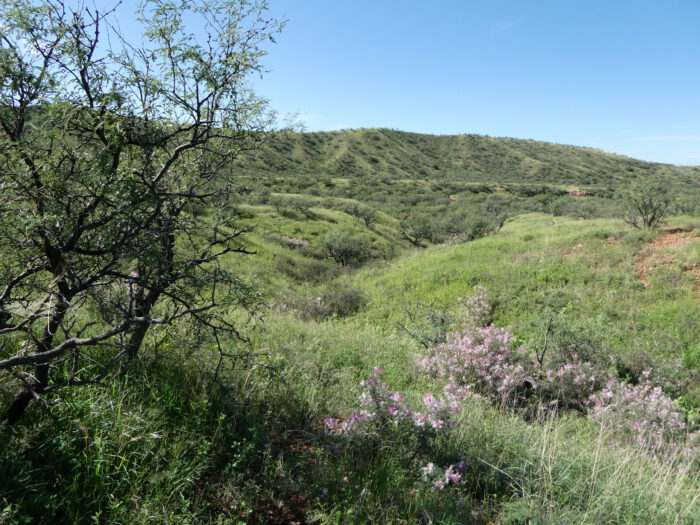

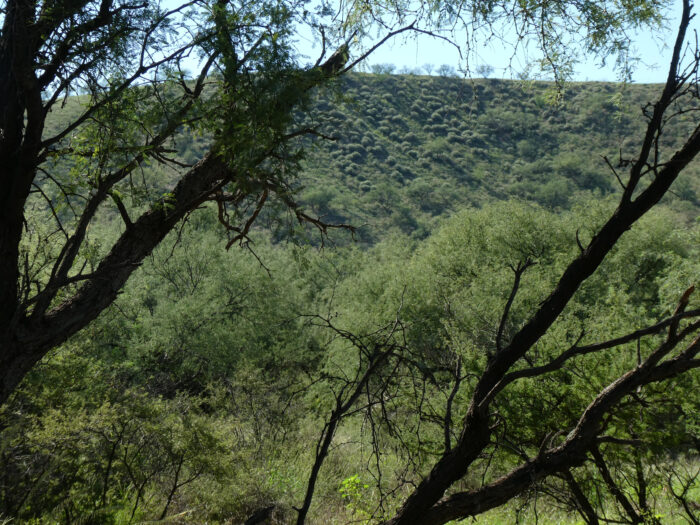
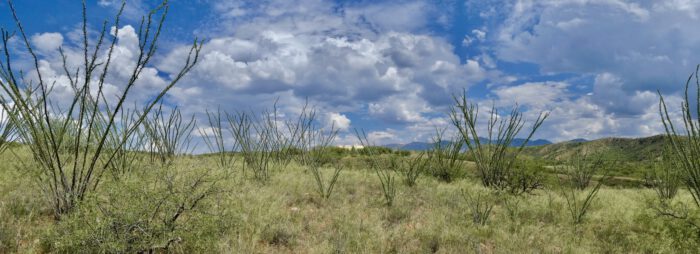
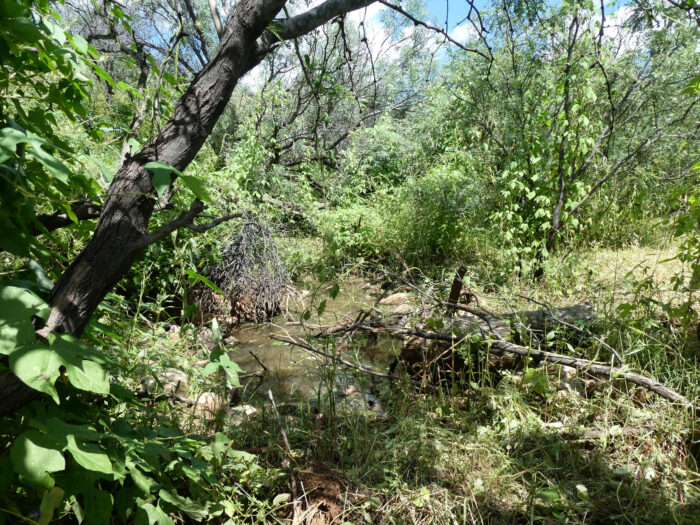

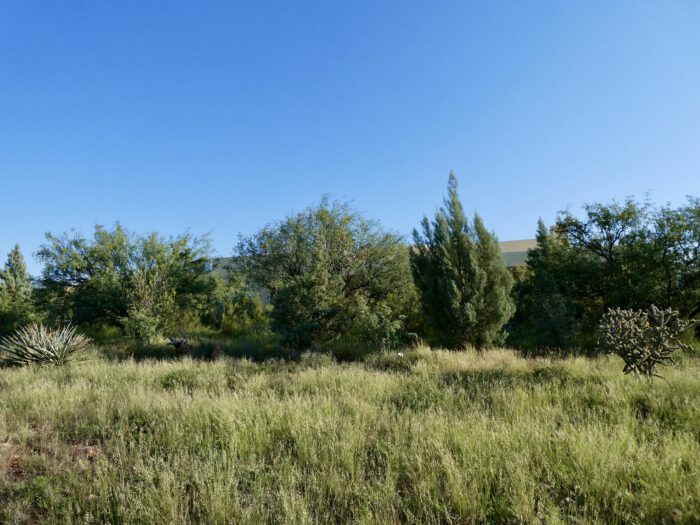
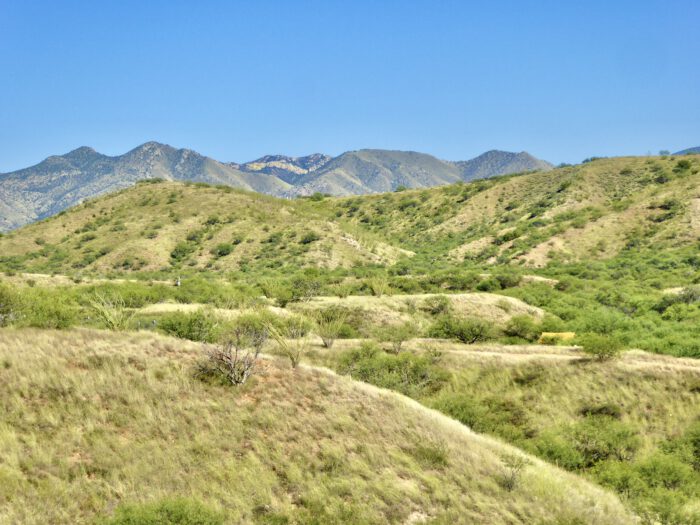
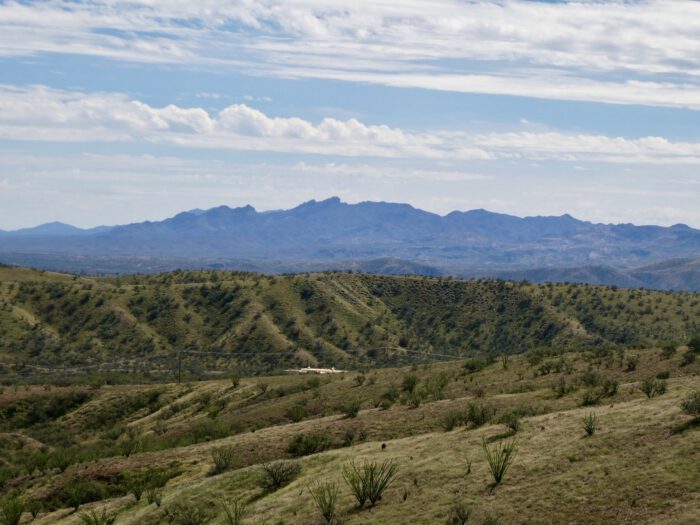
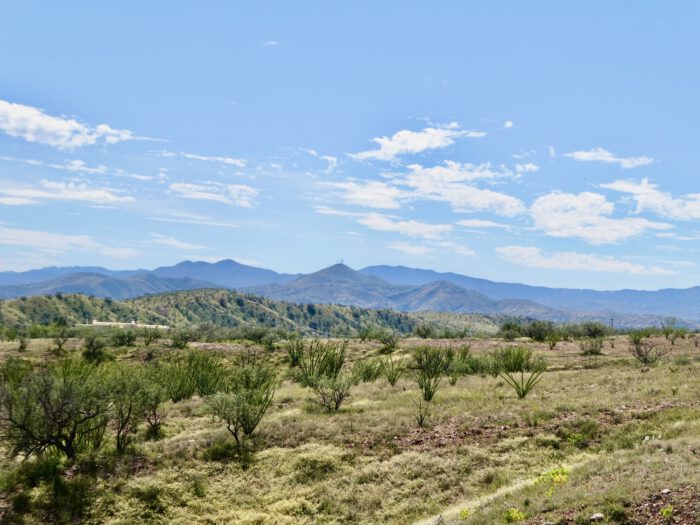
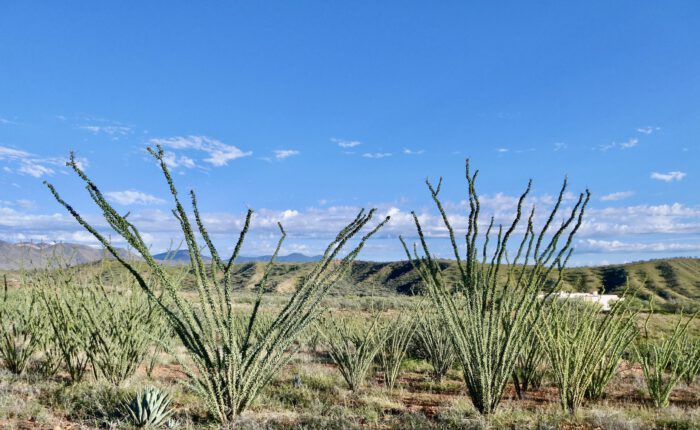
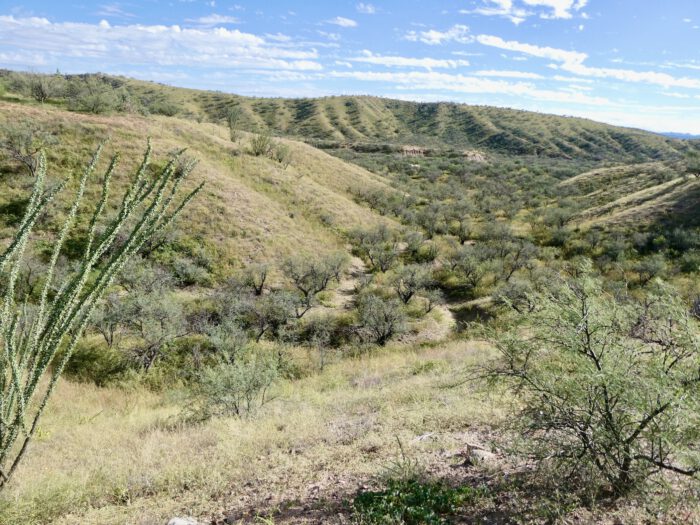
- 42- acre Habitat Assessment
- Planning and Design for each different Habitat
- Implementation of interventions for each Habitat
- Ongoing Monitoring of results
- Continued Post-restoration Habitat Management
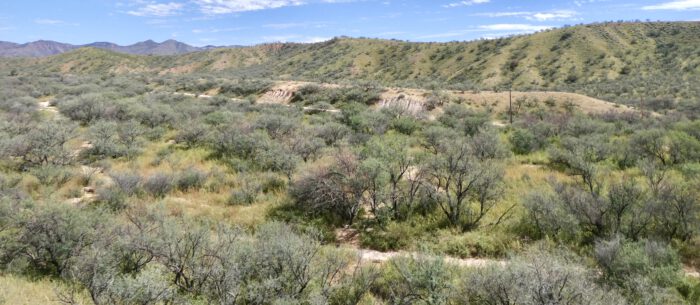
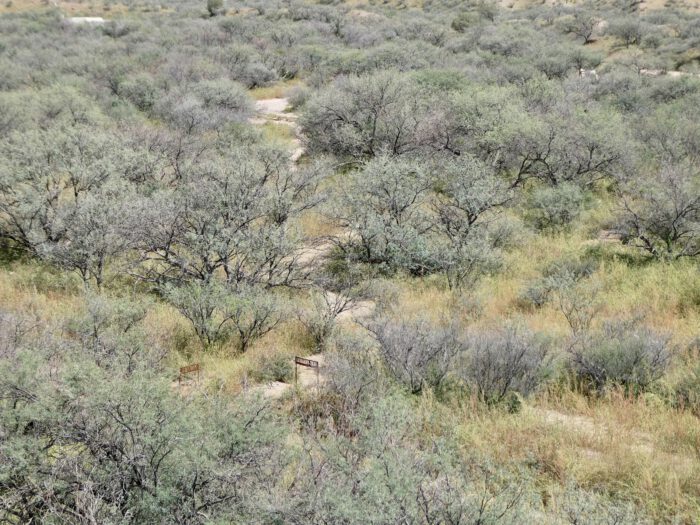
WILDLIFE PONDS
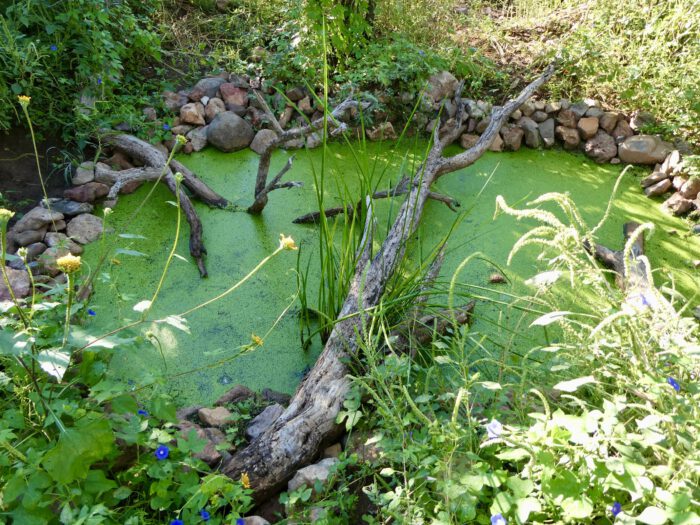
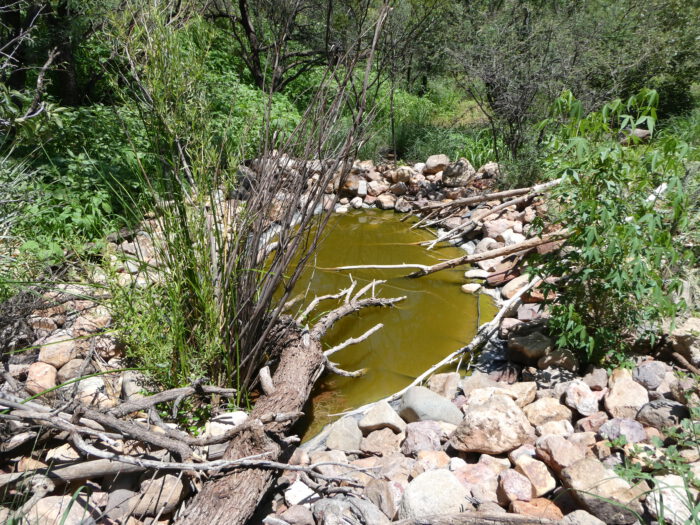
A rich aquatic environment thrives in each, as evidenced by native wetland plants such as Duckweed and Water Penny as well as many aquatic invertebrates. Adult Water Boatmen, various species of Diving Beetle, the larvae of Dragonflies and Damselflies, and other species comprise a varied underwater assemblage of life. Birds flock to the ponds, not only to drink and bath, but also to consume the many invertebrates concentrated in their vicinity. Lizards and snakes often sun themselves on the fringe of rocks surrounding the ponds, further adding to their enchanting aspect.
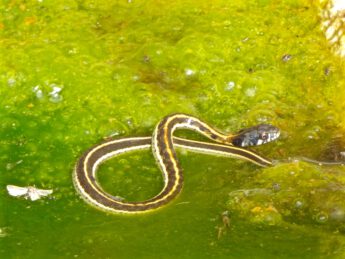
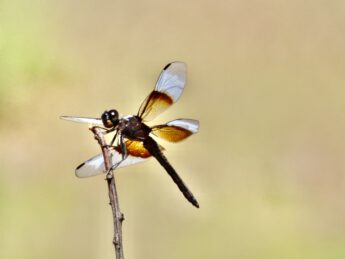
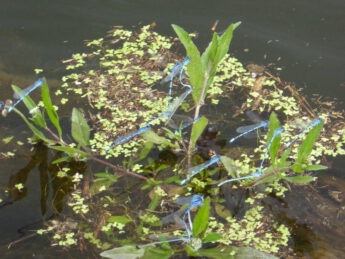
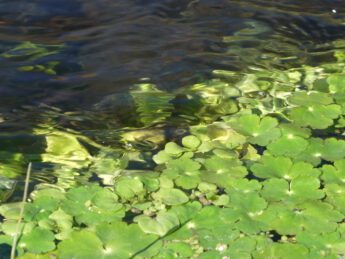
Whitetail Deer, Collared Peccary, threatened Yellow-billed Cuckoos, Gray Hawks, Common Gray Fox, various snakes, a veritable blitzkrieg of birds, and many butterflies are a mere sampling of the species benefitting from these crucial sources of water. Our remote wildlife cameras often capture these species as they visit our ponds. They are a true nexus of life here at the sanctuary!
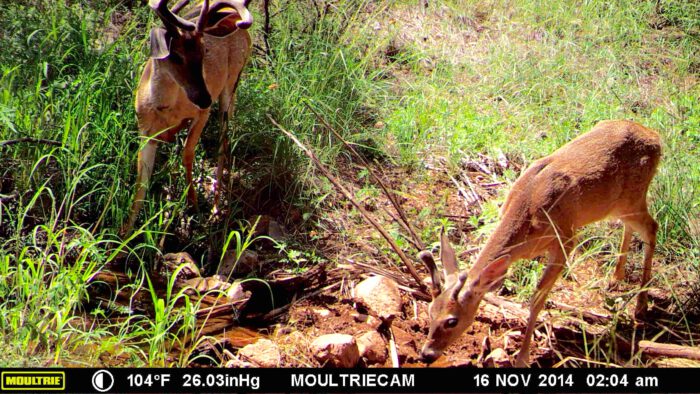

PLANTING NATIVE TREES
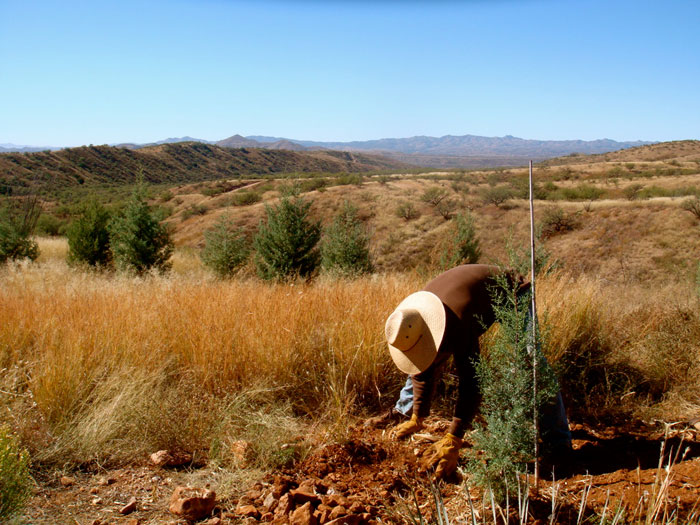
OUR TREE CHOICES & BENEFITS TO WILDLIFE
| SPECIES | EVERGREEN | FRUIT | NECTAR/SAP | SEEDS/NUTS | SHELTER |
| ARIZONA CYPRESS (Cupressus arizonica) |
X | X | X | ||
| ARIZONA WALNUT (Juglans major) |
X | X | X | ||
| EMORY OAK (Quercus emoryii) |
X | X | X | X | |
| VELVET ASH (Fraxinus velutina) |
X | X | X | ||
| ARIZONA ROSEWOOD (Vaquelinia californica) |
X | X | X | X | |
| EVERGREEN SUMACH (Rhus choriophylla) |
X | X | X | X | X |
| FREMONT COTTONWOOD (Populus fremontii) |
X | X | |||
| DESERT WILLOW (Chilopsis linearis) |
X | X | X | ||
| YELLOW TRUMPET (Tecoma stans) |
X | X | X | ||
| MEXICAN ELDERBERRY (Sambucus mexicana) |
X | X | X | ||
| NETLEAF HACKBERRY (Celtis reticulata) |
X | X | X | ||
| ARIZONA SYCAMORE (Platanus wrightii) |
X | X | X |
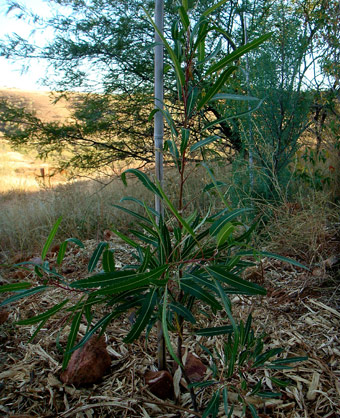 |
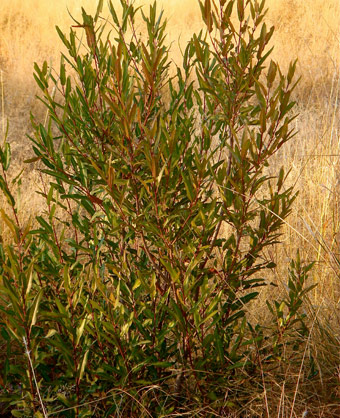 |
 |
 |
Top row: Medium Arizona Rosewood | Large AZ Rosewood
Bottom row: Medium Velvet Ash | Medium Arizona Cypress
